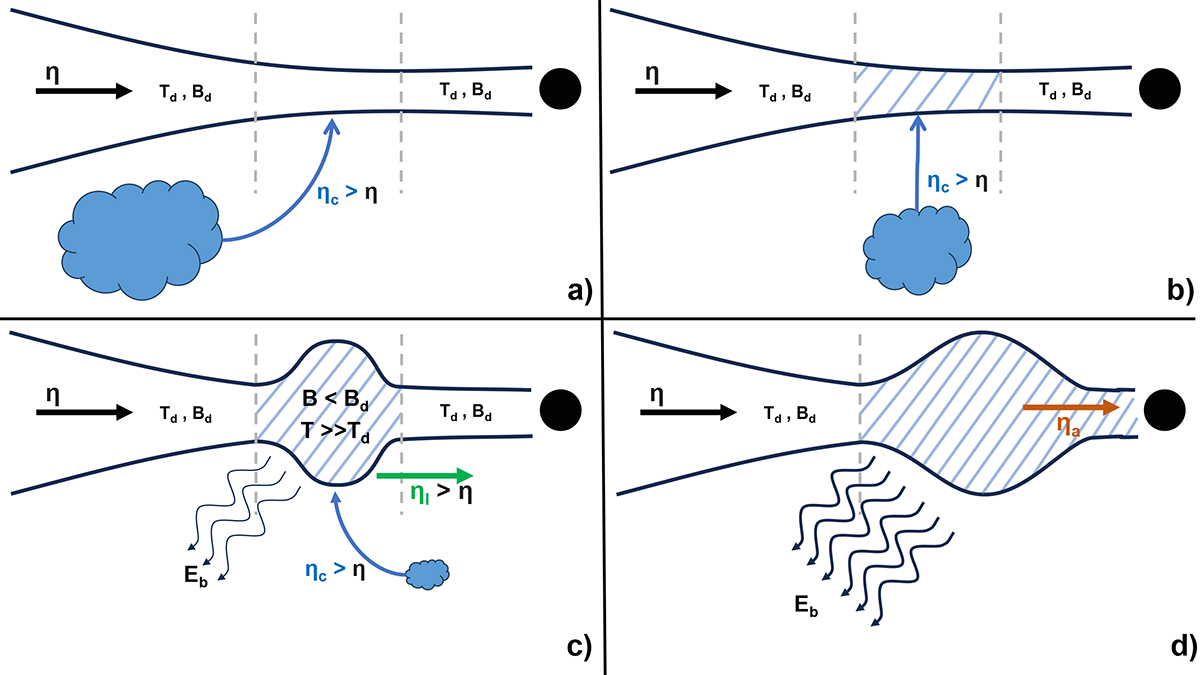Fig. 8.

Download original image
Cartoon describing our proposed scenario to explain the broad-band spectro-photometric variability of Mrk 1018. The initial condition is an optically thick, geometrically thin disk with internal accretion (η), temperature (Td), and a magnetic field (Bd). A cloud pushed toward the center – the effect of a wet merger or cold chaotic accretion – passes nearby and starts to deposit gas at a given radius (denoted by the vertical dashed lines) at a rate of ηc (panel a). If ηc > η, the region in the disk where the gas from the cloud accretes starts to puff up. The energy produced via viscous friction is no more efficiently released and the temperature T suddenly rises (panel b). When T ≫ Td, the hot gas is accreted inward at a rate of ηl > η, triggering this instability in the adjacent inner ring (panel c). The energy starts to be released magnetically and the magnetic field (B) in this region decreases. If ηc ≫ η, this process extends to the whole inner accretion flow, making it optically thin and geometrically thick. The energy is released magnetically (Eb), likely in the form of a jet, drastically reducing the temperature of the gas and advecting the material onto the SMBH at a rate of ηa < η (panel d).
Current usage metrics show cumulative count of Article Views (full-text article views including HTML views, PDF and ePub downloads, according to the available data) and Abstracts Views on Vision4Press platform.
Data correspond to usage on the plateform after 2015. The current usage metrics is available 48-96 hours after online publication and is updated daily on week days.
Initial download of the metrics may take a while.


